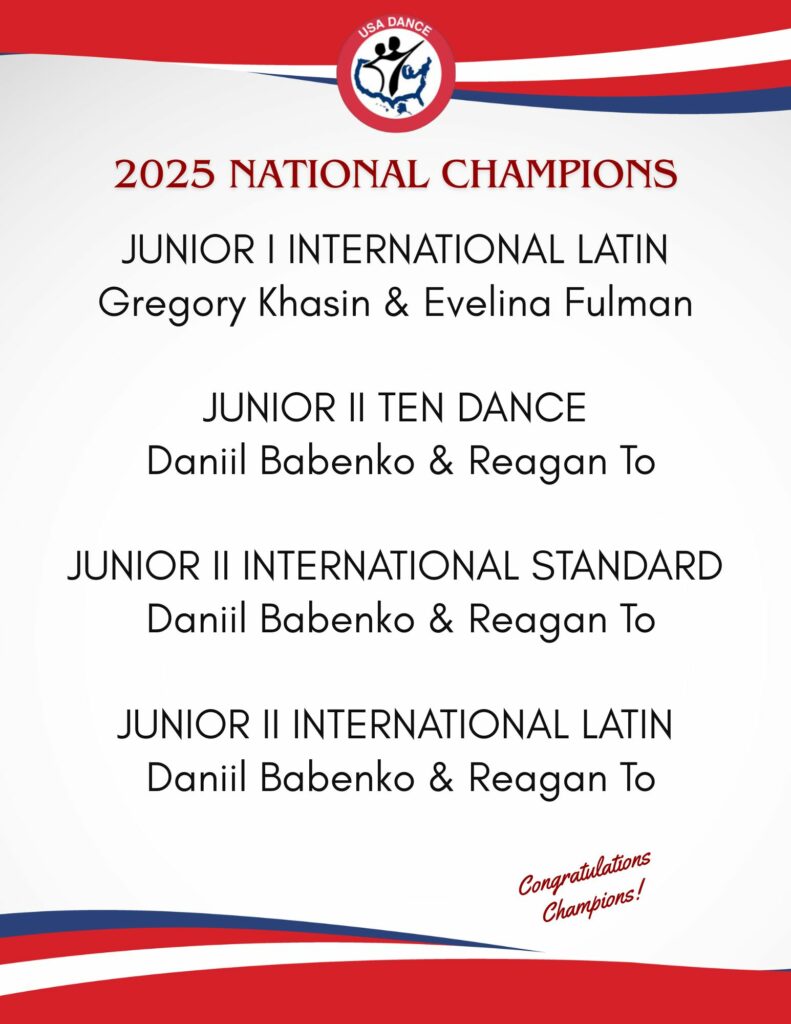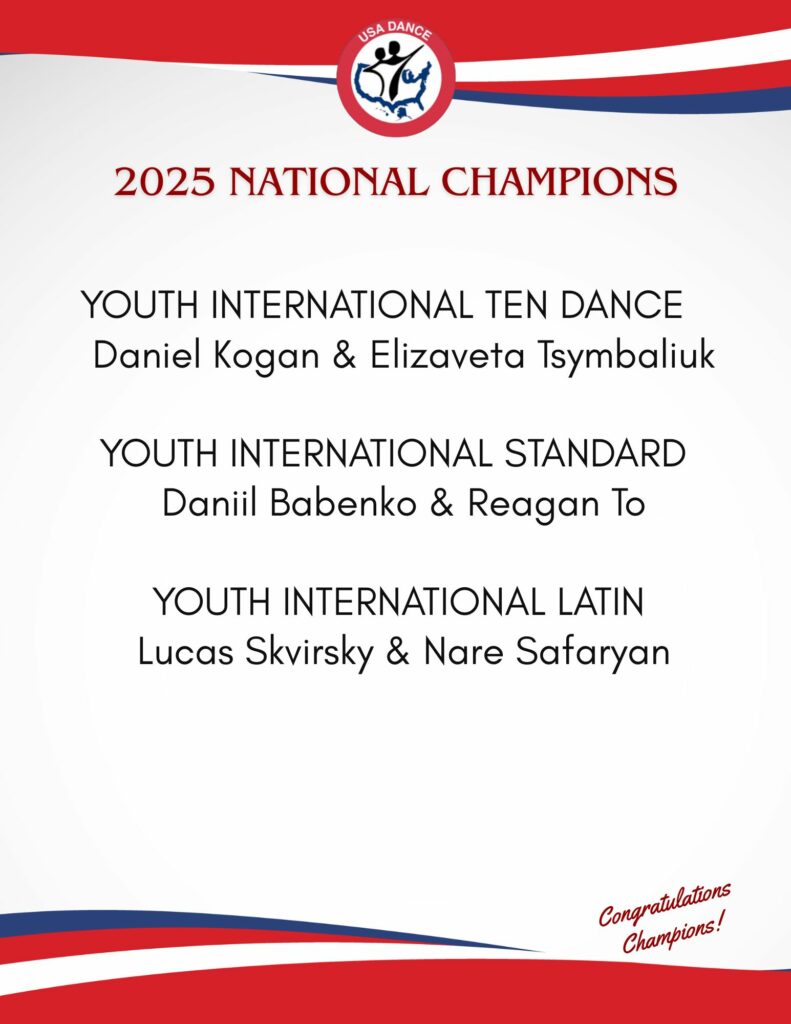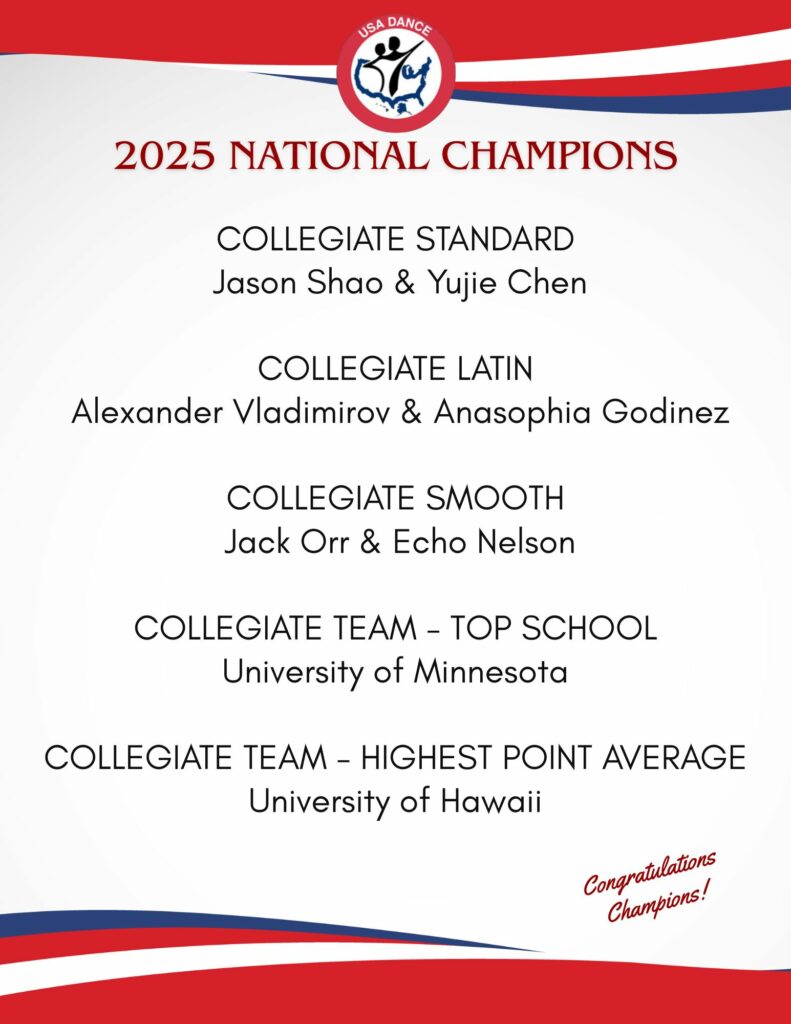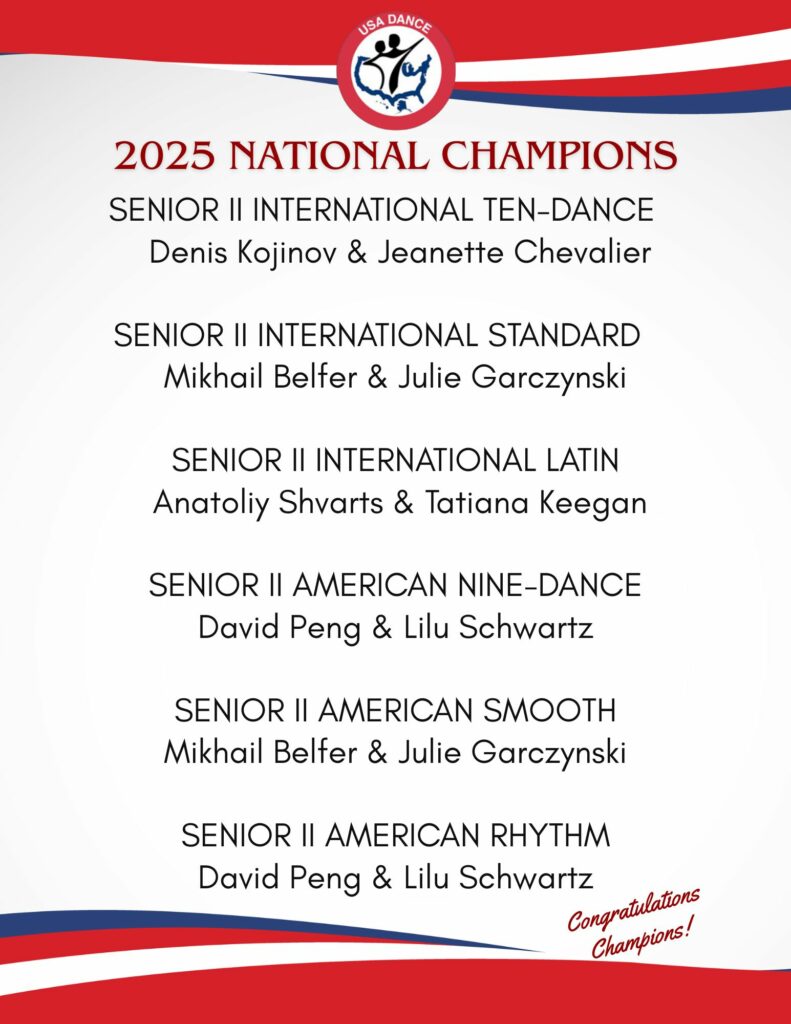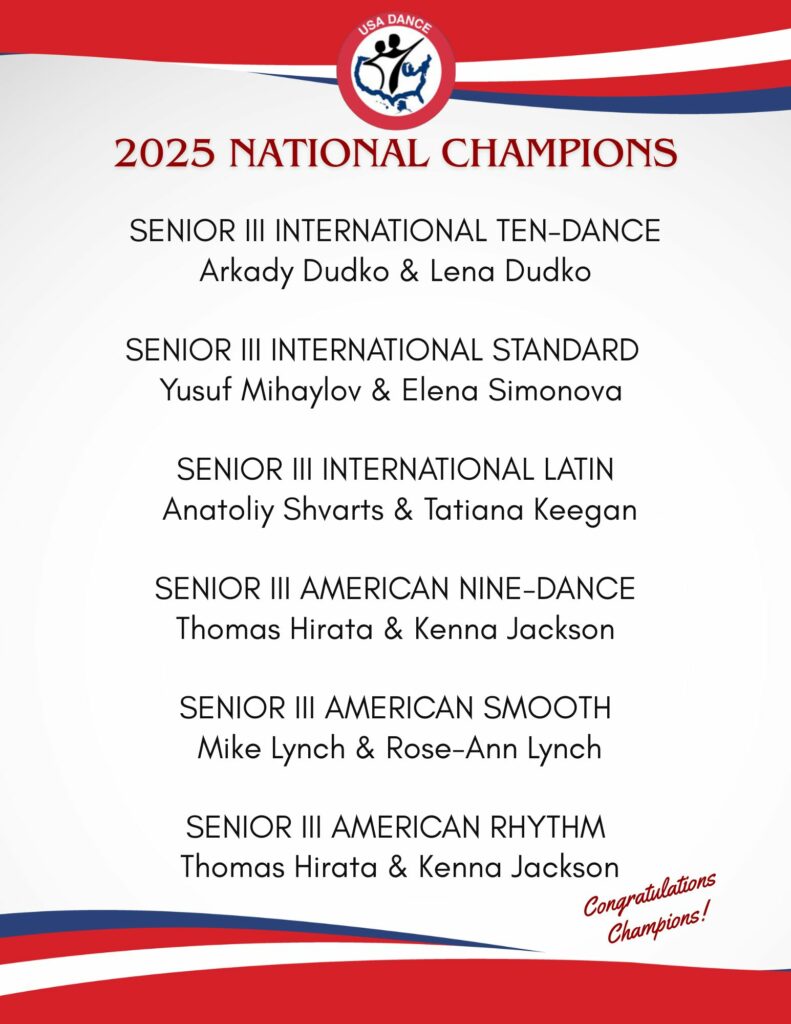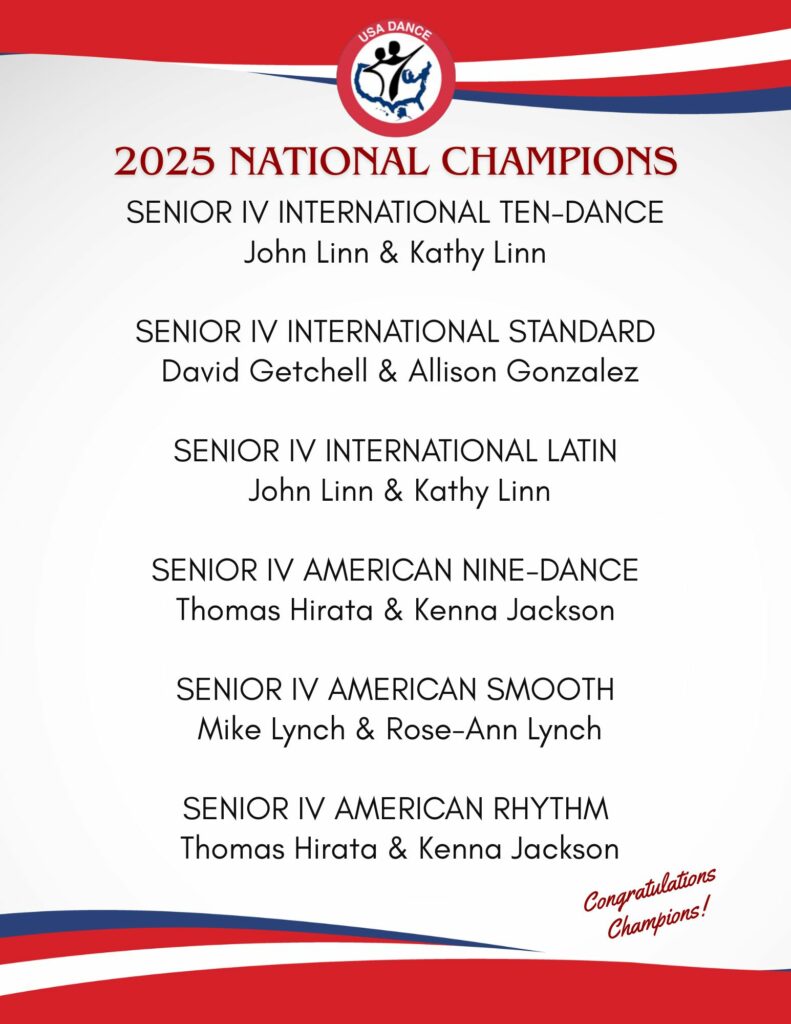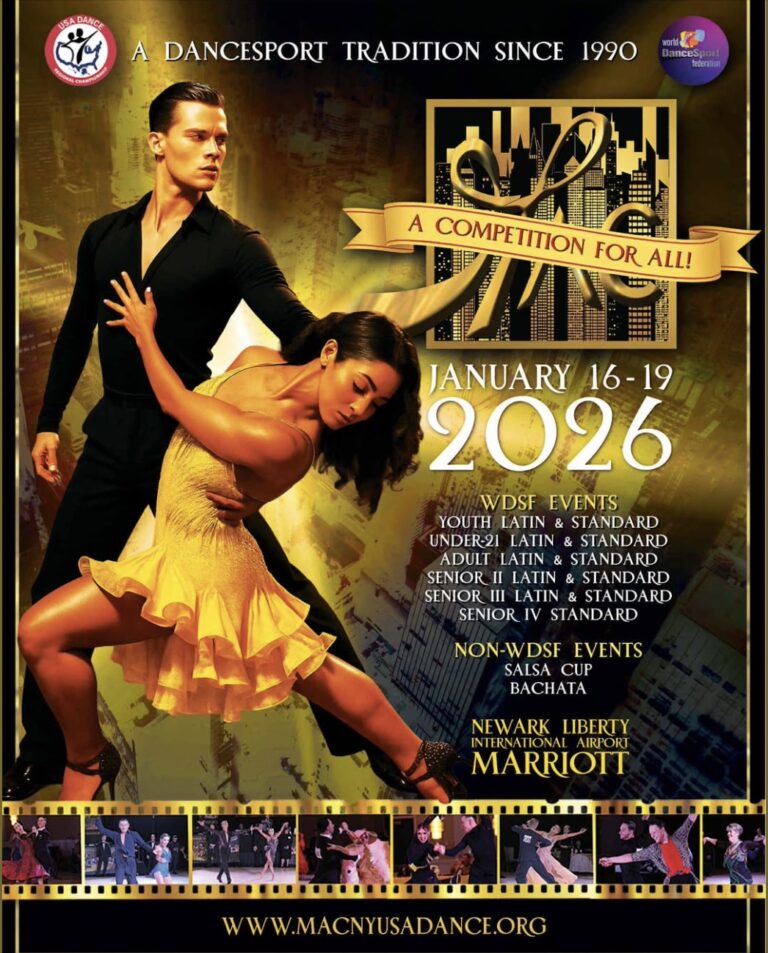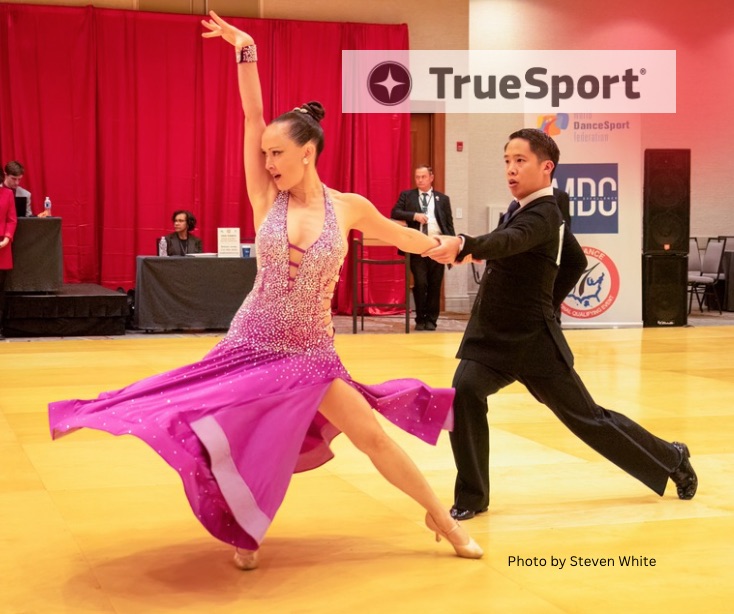The Chair of the Rules Committee, Sterling Sightler, has written an Executive Summary of the changes to the USA Dance Ballroom Division Rulebook. They are presented here by paragraph number. The USA Dance DanceSport Ballroom Division Rulebook is available online.
DanceSport Athletes, Adjudicators, and Organizers are asked to make note:
Section 2.2.6 Definitions:
The following definitions were added:
- Chapter/Collegiate Club Competition (this replaces non-sanctioned competition)
- State Competition
- Local Competition (this follows the rules for a Challenge except the requirements for the judges are relaxed)
- The definition of a Challenge Competition was changed to allow Challenges to host Continental and World Title events.
- The definitions of Regional Championship and National Championships were altered slightly.
The following definitions were removed:
- Open Championship
- Premier Competition
- Protected Competition
3.3 The rules for ShowDance were revised.
Section 4.3.6 Qualification for Nationals
The requirement to qualify for Nationals as a couple was changed. Athletes now qualify for Nationals as individuals.
Qualification for Nationals was changed to a point system, whereby athletes earn:
- 1 point at a Local Competition
- 2 points at a Challenge Competition
- 4 points at a Regional Competition
- 6 points by placing in the top 50% at a Regional Competition.
- Six points are required to qualify for Nationals.
4.3.6.3.4 defines what collegiate competitors are qualified to dance:
- One level of Collegiate events at the Collegiate National Ballroom Championships
- If the Collegiate National Championships are held in conjunction with the Ballroom National Championships, one level of Collegiate events and the same level of Adult Amateur events except Championship level
- Collegiate athletes must qualify for Championship events at the Ballroom National Championships in the same manner as non-collegiate athletes, i.e., using the point system described above.
4.3.8 A non-medical hardship waiver was added.
4.7.4.2 The age classification for Senior V was changed to each partner must attain their 70th birthday during the competition year (January 1 to December 31) to align with WDSF requirements.
Figure 1 The state of Arizona was moved from Region 3 (South) to Region 1 (West). Regional Map) appears in 5.1.1.1.1, 5.3.11.3.1, and 5.3.13.9.3.
Section 5.3 Sanctioned Competitions
State Competitions, Local Competitions, and Collegiate Competitions were added, and Open Championships were removed.
5.3.8 REQUIREMENTS COMMON TO ALL NON-COLLEGIATE SANCTIONED COMPETITIONS were changed to REQUIREMENTS COMMON TO ALL SANCTIONED COMPETITIONS.
5.3.8.12 Branding guidelines were clarified for the new competitions added.
5.3.9 Requirements for State Competitions were outlined.
5.3.10 Requirements for Local Competitions were outlined.
5.3.11.1.6 Collegiate competitions must have a college as the host was added.
5.3.11.2.2 Collegiate Challenge Competitions may offer only one age group was added.
5.3.11.2.11 A requirement for Reports by the Chair of Adjudicators and by the Organizer was added to Collegiate Challenge Competitions.
Collegiate Open Championships were removed.
5.3.11.3.2 Collegiate Regional Championships may offer only one age group was added.
5.3.12 Challenge Competitions
5.3.12.8.8 Challenge Competitions may hold WDSF or WDO events with the approval of the BAC was added.
5.3.10.12 A requirement for Reports by the Chair of Adjudicators and by the Organizer was added to Challenge Competitions.
5.3.13 Regional Championships
5.3.13.16 Medical Supervision of Athletes – The requirements for using volunteers as medical personnel were added, including required training, experience, and knowledge of equipment. The equipment that must be available at the competition when volunteers are used as medical personnel was specified.
Section 6.2.7.2 under Chair of Adjudicators was added to delineate what actions the Chair of Adjudicators may take when a judge or judges fail to serve on the panel due to illness or other emergencies with no or short notice to the Chairperson.
Changes to Medical Supervision of Athletes at Regional Championships
5.3.13.16 Medical Supervision of Athletes
5.3.13.16.1. Proper medical supervision of athletes in the ballroom must be provided at all times during the competition. This includes:
5.3.13.16.2 An AED must be located such that it can be available in the ballroom within 60 seconds’ notice.
5.3.13.16.3 Certified EMTs or Certified Athletic Trainers who will be within the ballroom at all times that the competition is in progress.
5.3.13.16.4 Volunteers may be used as medical personnel for a competition provided the following conditions are met:
5.3.13.16.4.1 Each volunteer holds current certification in Basic Cardiac Life Support.
5.3.13.16.4.2 Each volunteer has examined the AED present at the competition site and familiarized themself with its use.
5.3.13.16.4.3 The following equipment is present at the competition site and each volunteer has experience and knowledge in the use of this equipment: Ambu bag, face mask (several sizes), oral airways (several sizes), gloves, scissors, razors, padded tongue blade.
5.3.13.16.4.4 A First Aid Kit is present at the competition site containing at a minimum, alcohol wipes, band aids, moleskin, gloves, bandages, gauze pads, tape, scissors, antibiotic ointment, self-adhering bandage wrap or Ace wraps, and instant cold packs.
5.3.13.16.4.4 A schedule of when each volunteer is on duty in the ballroom as the medical personnel must be created and provided to each medial volunteer, the Chair of Adjudicators, the MC, and the DRO. The schedule should cover all times that the competition is in progress. Volunteers must never be scheduled during times when they are competing. The schedule should include the location of the AED as well as who is responsible for bringing it to the site of the emergency if it is needed.


